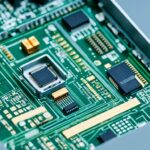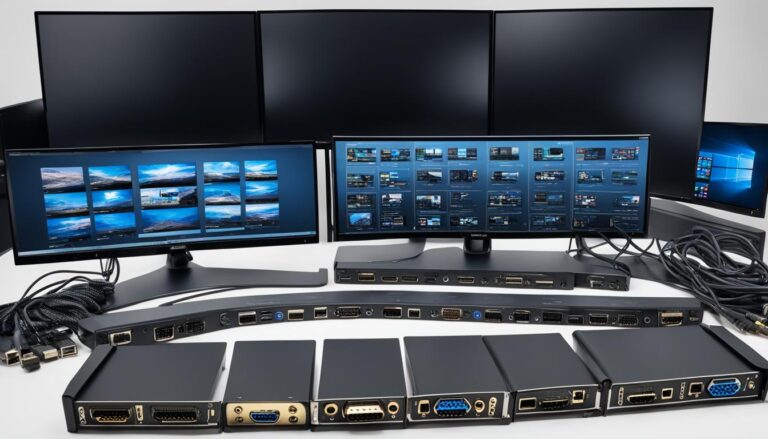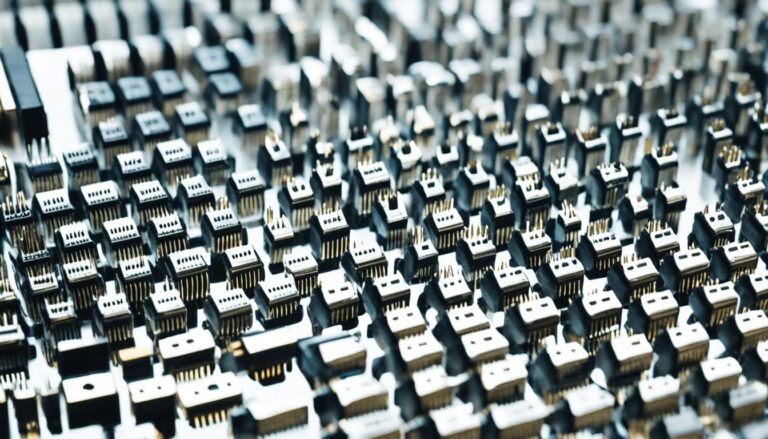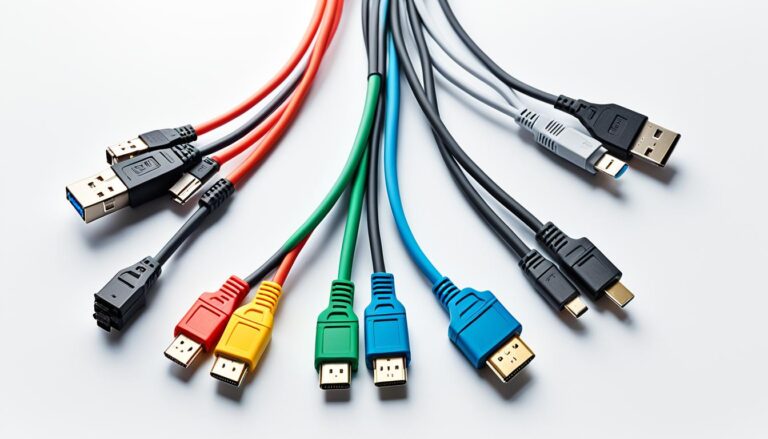The USB power button on laptops makes turning on the device more straightforward. No need to search for the power button under the lid. This feature allows for an effortless start with a simple press of the laptop USB power button.
It offers better control over turning the laptop on and off. There’s no hassle with finding the hidden power button when using external devices. Just press the power button on the USB port for easy access.
This button not only adds ease of use but also improves convenience. It removes the need to open the laptop lid to turn it on, saving time. This benefits those who frequently switch their laptops on and off during the day. Now, turning on the laptop is quicker and more efficient.
In conclusion, the laptop USB power button greatly enhances how we turn laptops on. It brings better functionality, control, and convenience to the user experience. Knowing how to use this feature can make a big difference in how we interact with our laptops.
The Power-On Problem with Hidden Power Buttons
Many laptops, like the Dell XPS 13, have their power buttons hidden under the lid. This stops them from being turned on by accident. However, it can be annoying for users.
To start the laptop, you must slide it out of its stand and open the lid. Then you push the power button, close the lid, and slide it back. This takes time and can frustrate people.
“The hidden power button under the lid of my Dell XPS 13 laptop has been a constant annoyance,” says Mark Johnson, a frequent traveler who relies on his laptop for work. “Having to slide it out, open the lid, hit the power button, and repeat the process every time I want to turn it on or resume from sleep mode is rather cumbersome.”
This problem with hidden power buttons affects many laptop users. It interrupts their work and adds extra steps to turning on their laptop. But, there are ways to fix this and make starting the laptop easier.
Comparison of Laptop Power-On Methods
| Power-On Method | Advantages | Disadvantages |
|---|---|---|
| Hidden Power Button under the lid | – Prevents accidental powering on – Conceals power button for a sleek design |
– Requires multiple steps to turn on the laptop – Can be time-consuming and frustrating for users |
| Wake-on-LAN | – Enables remote power-on functionality | – Requires an additional device capable of sending a magic packet – Cumbersome setup |
| Modified Power Adapter with Wake on AC Switch | – Provides a convenient alternative to the hidden power button – Simplifies the power-on process |
– Requires modifying the power adapter – May void warranty if not done properly |
| Wake-by-USB in BIOS settings | – Allows powering on the laptop using a USB device | – Requires USB ports to be constantly powered, leading to quick battery depletion |
Looking at the pros and cons of different power-on methods can help users choose the best one. While they all have good and bad points, the modified power adapter with Wake on AC switch is a good workaround for hidden power button issues.
We’ll look at solutions more closely next. These solutions are designed to reduce the trouble caused by hidden power buttons. They aim to make turning on laptops quick and easy for users.
Possible Solutions for the Power-On Problem
Users facing the power-on problem with hidden buttons on laptops have looked into different solutions. Let’s explore two common ones: The Wake-on-LAN function and the Wake-by-USB feature in BIOS settings.
Wake-on-LAN Function
The Wake-on-LAN function can help solve the power-on issue. It uses an extra device to send a special signal. This signal wakes the laptop up remotely.
But Wake-on-LAN has a downside. You need another device, like a smartphone or computer, on the same network to send this signal. Relying on another device can be bothersome and not always practical.
Wake-by-USB Support in the BIOS Settings
Wake-by-USB support in BIOS settings is another potential fix. It lets you turn the laptop on by pressing a key on a USB keyboard or by connecting a USB device.
This method also has its considerations. The USB ports must stay powered on even when the laptop is off. This could lead to faster battery drain, which isn’t great if you value battery life.
Both Wake-on-LAN and Wake-by-USB offer ways to deal with hidden power buttons. However, they come with drawbacks that might not make them suitable for everyday use.
| Possible Solutions | Pros | Cons |
|---|---|---|
| Wake-on-LAN | – Can wake up the laptop remotely – Allows for convenient power-on control |
– Needs an extra device for the magic packet – Not great for daily use |
| Wake-by-USB Support | – Can turn on with USB keyboard or devices – Handy for those with USB accessories |
– USB ports must be powered constantly, draining battery faster – Not the best for those who concern about battery life |
“Thinking about the limits and cons of Wake-on-LAN and Wake-by-USB is key. Users should weigh what works for them best.” – LaptopExpert01
The Quirky Solution: Wake on AC Switch
Some users have found a novel way to turn their laptops on. This involves the Wake on AC switch in the laptop’s BIOS. When this feature is on, connecting the power adapter or DC cable turns the laptop on automatically.
Users have made their power adapters even more useful. They’ve added a flip switch to the DC cable. Now, turning on the laptop is as easy as flipping the switch twice. This is a brilliant fix for laptops with hidden power buttons.
“The Wake on AC switch has been a game-changer for me. I used to struggle with the hidden power button on my Dell XPS 13, but now I can power on my laptop effortlessly with just a flick of the switch on my modified power adapter.” – satisfied user
This clever workaround saves time and eases frustration. It’s a user-friendly solution to the hidden power button problem. By using the Wake on AC switch, users have found a smart way to avoid this issue.
Advantages of the Wake on AC Switch:
- Simple and straightforward activation process
- Eliminates the need to access the hidden power button
- Provides a convenient and efficient power-on alternative
- No additional hardware or external devices required
This innovative solution highlights how creative laptop users can be. Thanks to the Wake on AC switch, the power adapter is now key to easy startup. This makes turning on laptops much simpler.
For a clear picture of how the Wake on AC switch operates, see the diagram below:
| Step 1 | Connect the power adapter to AC or the DC cable to the laptop. |
|---|---|
| Step 2 | Flip the switch on the modified power adapter twice. |
| Step 3 | Watch your laptop power on effortlessly. |
Understanding Computer Ports and Buttons
Computer cases come with many buttons, ports, and slots. They differ from one computer to another. These parts are key for connecting things like keyboards and printers to the computer.
USB Ports
USB ports are very common on computers. USB stands for Universal Serial Bus. It’s used to connect devices like mice, keyboards, and cameras. With USB ports, connecting these devices is easy. You don’t need complicated steps to start using them.
Power Buttons
Power buttons turn computers on and off. They can be on the case or on laptops. The one on the case controls the whole system’s power.
The laptop’s power button is easy to reach. It lets users easily turn their device on or off. This makes controlling the laptop straightforward, without hard-to-understand menus.
Understanding computer ports and buttons is crucial. They help connect peripherals smoothly, from USB ports for devices to power buttons for system control. Knowing these parts makes using your computer easier.
Conclusion
The USB power button on laptops makes life easier. It helps you turn your laptop on without searching for the hidden power button. This way, you can start your laptop with just a modified power adaptor.
Knowing about computer ports and buttons is key to using devices well. USB ports let us connect many devices, like mice and keyboards. The USB power button not only starts the laptop but also connects these devices.
So, the laptop USB power button is a big help. It removes the struggle of trying to find the hidden power button. With a good understanding of computer ports, you can make the most out of your laptop.
FAQ
What is the functionality of the USB power button on laptops?
The USB power button makes starting laptops easier and quicker. It avoids the need to find the power button under the lid.
Why is the hidden power button on laptops considered a power-on problem?
Having to find and use the hidden power button is a real pain. You must take the laptop out, open it, push the button, then close it and put it back. This process can be annoying and slow.
What are some possible solutions to overcome the power-on problem with hidden power buttons?
People have tried different fixes. Some include using Wake-on-LAN or enabling Wake-by-USB in the BIOS. But these aren’t perfect for everyday use.
What is the quirky solution to the power-on problem?
A clever fix involves the laptop’s Wake on AC feature. You modify the power adapter with a switch on the DC cable. Just flick the switch twice to start the laptop. This offers an easy way around the hidden power button issue.
Why is it important to understand computer ports and buttons?
Knowing about ports and buttons helps connect devices smoothly. USB ports let us plug in many types of devices. Power buttons turn our devices on or off. Knowing how they work is key.
How does the USB power button improve the user experience?
The USB power button adds value by solving the hidden power button issue. It means quicker, more enjoyable experiences when starting laptops.


















